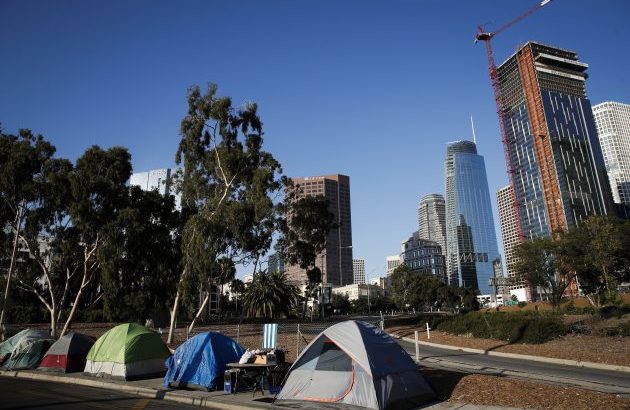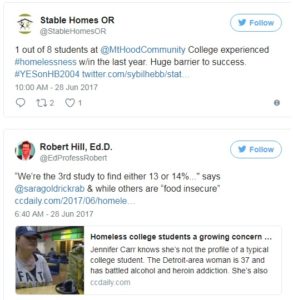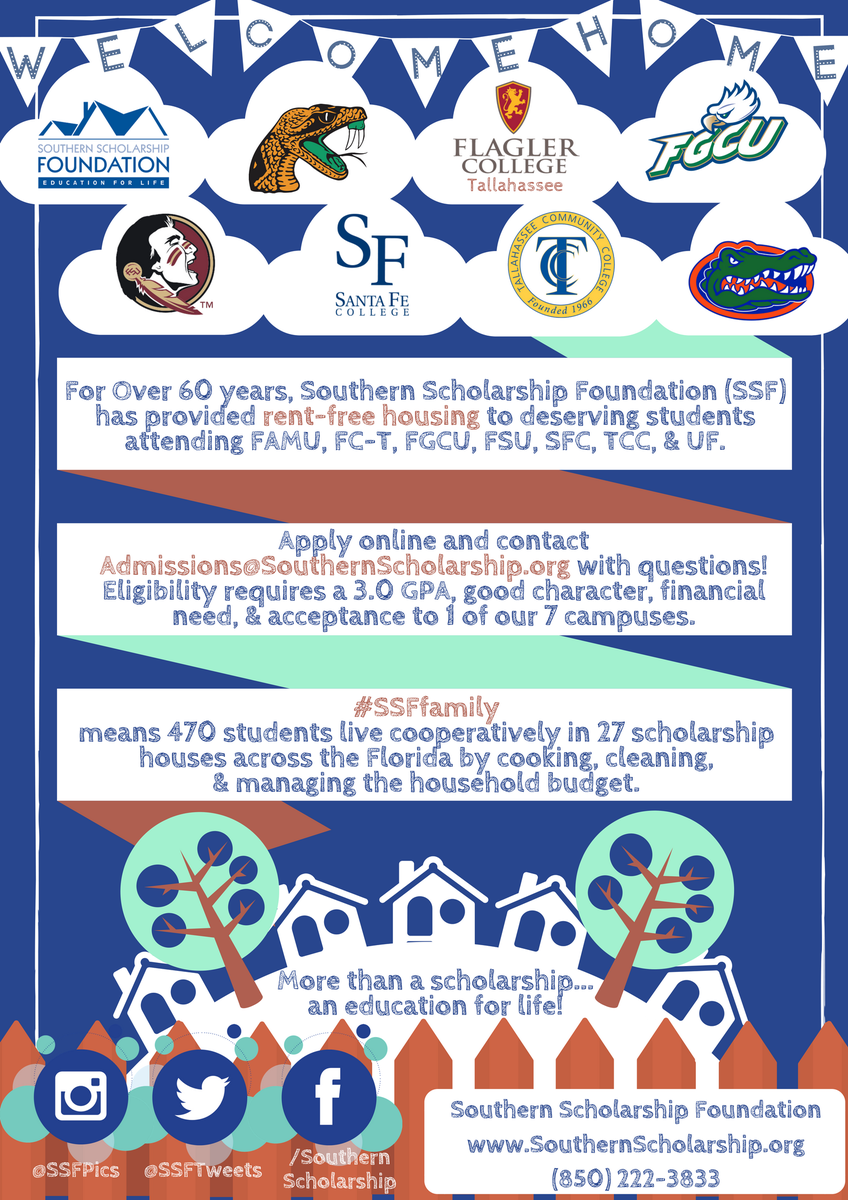América del Norte/EEUU/College.usatoday.com
Resumen: Un nuevo estudio de la fundadora del laboratorio de Wisconsin HOPE Sara Goldrick-Rab y dos coautores descubrieron que miles de estudiantes universitarios comunitarios de todo el país no tienen hogar o están al borde de la falta de vivienda. El Wisconsin HOPE Lab dice que es «el primer laboratorio nacional para la investigación traslacional dirigido a mejorar los resultados equitativos en la educación postsecundaria». El estudio encuestó a más de 30.000 estudiantes en 70 colegios comunitarios en 24 estados. Se encontró que el 13-14% de los estudiantes estaban sin hogar y alrededor de la mitad eran inseguros de vivienda, lo que significa que han perdido los pagos de alquiler o sofá-surf de un lugar a otro. La encuesta también encontró que dos tercios de los estudiantes universitarios de la comunidad no cuentan con sustento alimentario seguro, lo que significa que carecen de los recursos para alimentarse adecuadamente.
At the age of 35 and caring for her 9-year-old son, Mary Baxter found herself without a place to live last summer. Forced from her apartment because of unlivable conditions and her landlord facing foreclosure, Baxter knew she needed to go back to school.
“For me, it wasn’t an option,” says Baxter, who received a two-year art and design degree from Community College of Philadelphia in May 2016.
Unable to afford the art schools she had been accepted to, like NYU and University of Chicago, she returned to Community College of Philadelphia in Fall 2016. Baxter wanted to further her education for a better job that would allow her to escape poverty.
“How can you feed yourself on $8 an hour with a kid and pay rent?” Baxter says. “There’s no way.”
Baxter’s predicaments are not uncommon among community college students.
A new study by Wisconsin HOPE Lab founder Sara Goldrick-Rab and two co-authors found that thousands of community college students nationwide are homeless or on the verge of homelessness. The Wisconsin HOPE Lab says it’s “the nation’s first laboratory for translational research aimed at improving equitable outcomes in postsecondary education.”
The study surveyed more than 30,000 students at 70 community colleges in 24 states. It found that 13-14% of students were homeless and about half were housing insecure, meaning they’ve missed rent payments or couch-surf from place to place. The survey also found that two-thirds of community college students are food insecure, meaning they lack the resources to properly feed themselves.
Another recent survey found 20% of Los Angeles community college students are homeless and nearly two-thirds are food insecure. Past studies have found similarly high numbers when it comes to college homelessness across the country.









 Users Today : 66
Users Today : 66 Total Users : 35459972
Total Users : 35459972 Views Today : 83
Views Today : 83 Total views : 3418548
Total views : 3418548